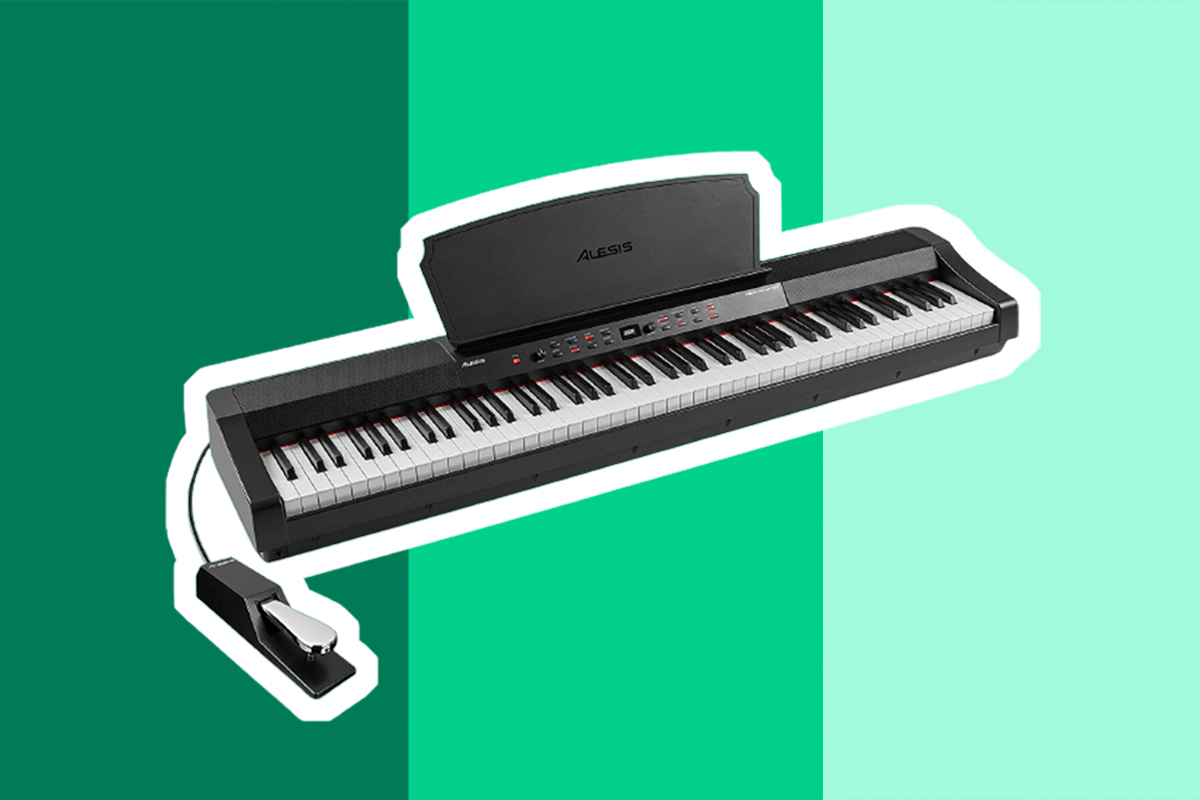
Are you thinking about upgrading your piano skill to an advanced level? Nothing prepares you better than practicing on an intermediate digital piano. Of course, finding the best digital piano for intermediate pianists can be a bit difficult due to the countless products on the market.
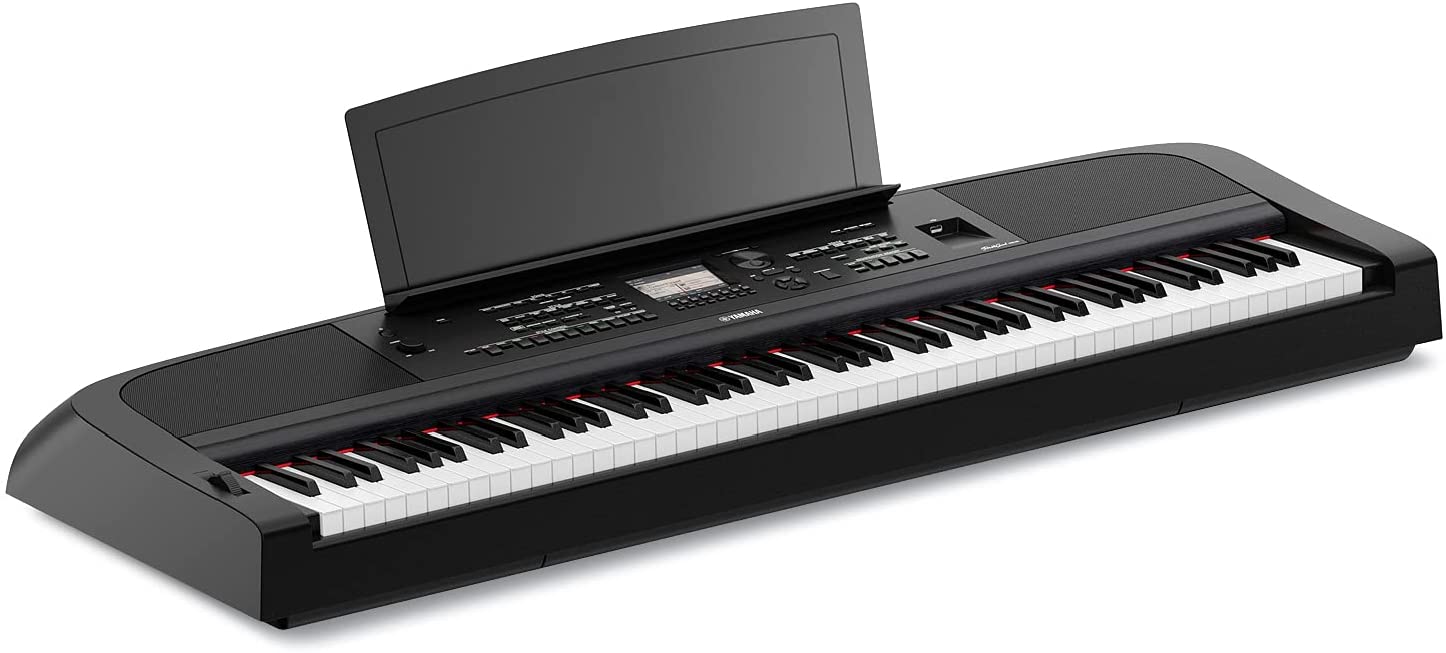

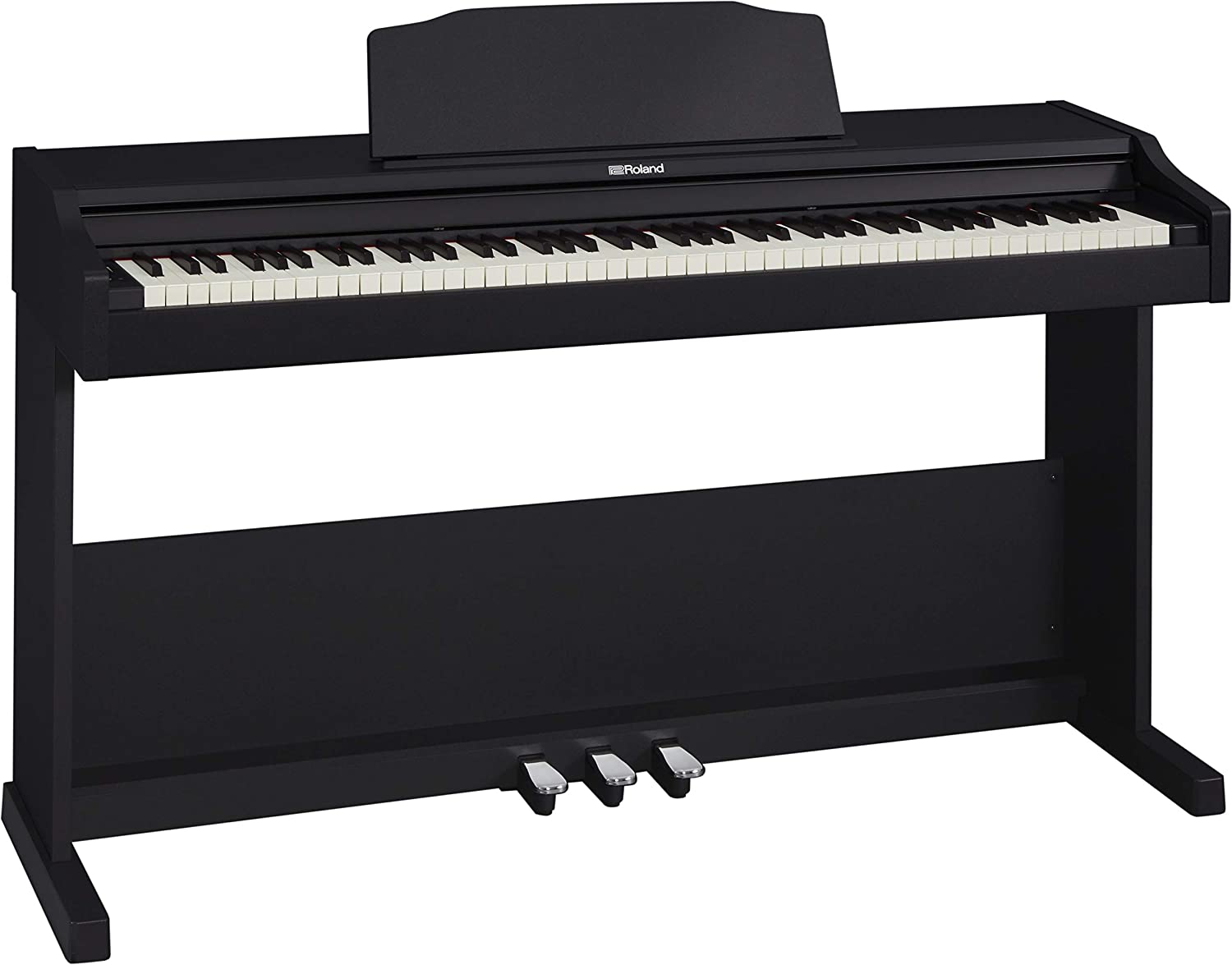

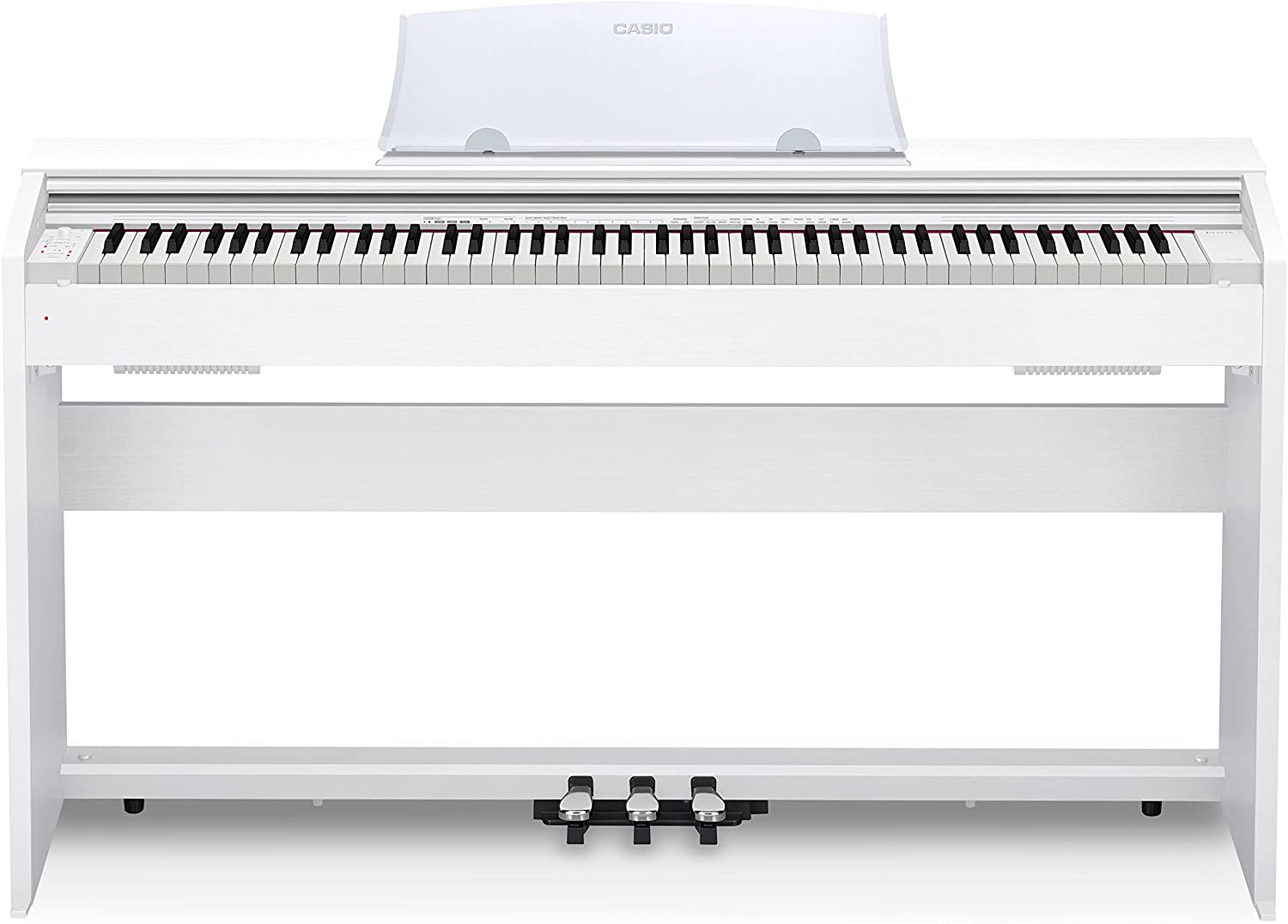

But things don’t have to be difficult when you know the right things to look out for in the ideal piano. We’ve tested several high-quality digital pianos and helped you to narrow down the list. We didn’t stop there; we’ve also done a comprehensive review of the pianos.
From the keyboard and sound quality of the pianos to their construction and fitness for the stage, we’ve ensured that you have every information you need to identify the best digital piano. Read on to learn all about choosing the right piano to upgrade your skill.
| № | Name | Rating | |
|---|---|---|---|
| 1 | Yamaha DGX670B |
9,7
|
Check price |
| 2 | Roland RP102 |
9,6
|
Check price |
| 3 | Casio PX-770 WH Privia Digital Home Piano |
9,4
|
Check price |
| 4 | Alesis Prestige Artist |
9,3
|
Check price |
| 5 | Yamaha P-125 88-Key Weighted Action Digital Piano |
9,2
|
Check price |
| 6 | Kawai ES110 |
9,0
|
Check price |
| 7 | Korg B2 |
8,9
|
Check price |
| 8 | Donner DDP-100 |
8,8
|
Check price |
More features: 601 preset voice, 29 preset drums, 469 preset effects, 150 custom effects, 3 touch sensitivity levels

The Yamaha DGX670B is a standout digital piano not just because of its professional appearance, but it’s also packed with exciting features. Firstly, this musical instrument boasts a tonal variation that responds to your touch. It also features the sympathetic resonance of grand pianos. On top of that, this piano features the Stereophonic Optimizer that enhances your headphone experience.
Moreover, the Yamaha DGX670B digital piano is ideal for aspiring and intermediate pianists. Whether you’re looking to leave the beginner’s zone or you are eyeing the expert status, this piano is designed for you. Also, if you want a digital piano that sounds like an acoustic piano, the Yamaha DGX670B’s weighted action keyboard is made for you.
More features: 4 piano and 11 instrumental presets, 6 touch sensitivity levels, 2 effects, 200 onboard song playbacks

The Roland RP102 digital piano is all about rich tones. Featuring a smart SuperNATURAL Piano technology, this piano delivers the response and authentic tone of an acoustic piano. And three pedal controls enhance the real acoustic piano feel. Additionally, this piano boasts a built-in Bluetooth MIDI that allows wireless connection to apps on your tablet or smartphone.
If you’re looking to upgrade your piano playing skills seamlessly, the Roland RP102 is a high-quality and reliable digital piano to consider. With the Roland Piano Partner 2 app, you can easily access advanced piano controls and several features for education, performance, and entertainment.
More features: 19 preset tones, 3 touch sensitivity levels, 11 effects, 60 song playbacks

The Casio PX-770 is another brilliant digital piano on our list. It uses the AiR engine to provide accurate grand piano sounds. The musical instrument also uses a Hammer Action II keyboard. And there’s a Duet Mode that splits the piano into two equal pitch ranges. Additionally, the piano can be connected to a smartphone or computer.
If you’re in love with classic music and you’re on the lookout for an intermediate digital piano, the Casio PX-770 is a fantastic option. This piano comes with a library of ten classical pieces, providing you with the chance to play along with a live symphony orchestra.
More features: 4 touch sensitivity levels, 30 voice presets, 5 effects
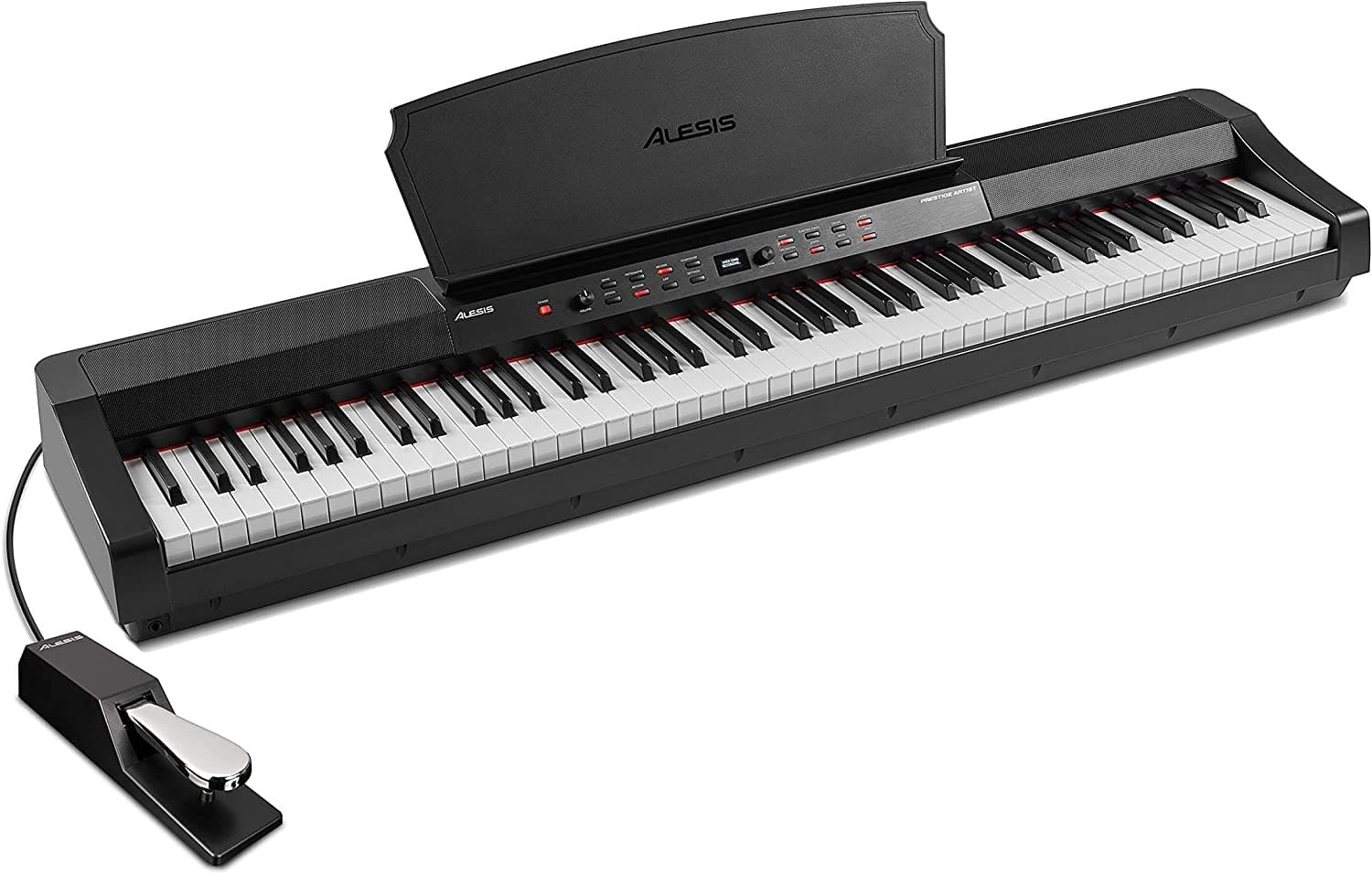
The Alesis Prestige Artist digital piano boasts nearly everything you want in your dream piano. The keyboard features an adjustable touch response and graded hammer action for a natural piano feel. Apart from that, the piano comes with 30 multi-sampled voices and 256-note polyphony for a superb playing experience. Plus, there’s an OLED screen for intuitive control.
At a relatively low price, the Alesis Prestige Artist digital piano sports so many exciting features. If you’re on a budget and you still want a reliable digital piano for your development, you can’t possibly ignore this instrument.
More features: 4 touch sensitivity levels, 24 voice and 21 demo songs presets, 4 effects, 50 piano songs presets

The Yamaha P125 digital piano sports a minimalist design that looks great. Unlike the modest design, the performance is well pronounced. The Graded Hammer Standard (GHS) keyboard works just like an acoustic piano. Furthermore, the piano features a pure CF sound engine that reproduces the tones of the revered Yamaha 9’ CFIIIS Concert Grand piano.
If you’re looking for the perfect intermediate digital piano for home practice, chances are that you won’t get any option better than the Yamaha P125. Not only is the piano compact and portable, but it’s also light enough for easy carriage. On top of that, it’s user-friendly, making it the ultimate home digital piano.
More features: 4 touch sensitivity levels, 3 effects, 19 presets, 15,000 note memory

The uniqueness of the Kawai ES110 is evident in its many vital features. For example, the keyboard’s weighted keys and responsive hammer compact action provide realistic grand piano touch. Also, the piano boasts 19 inspiring voices, 192-note polyphony, as well as dual and split modes.
Becoming an expert pianist requires lots of practice and that requires getting the right lessons. With various onboard lessons, including Burgmuller etudes and Alfred Basic Piano lessons, the Kawai ES110 positions itself as the dream transition piano for intermediate pianists. If you’re looking for a smooth transition, you should consider this piano.
More features: 3 touch sensitivity types, 12 piano presets, 2 effects, damper pedal
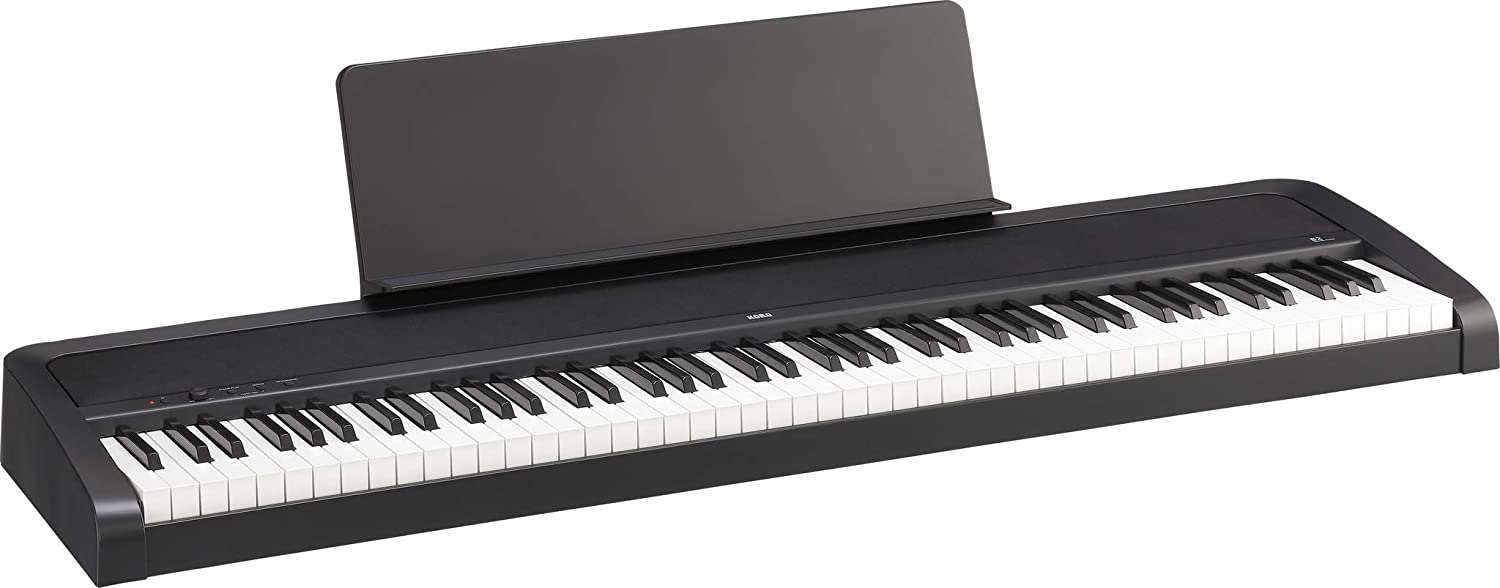
The Korg B2 is as digital as a digital piano can be. It features a weighted Hammer Action keyboard that delivers an authentic acoustic piano feel. This piano also sports a cutting-edge sound engine with 12 unique sounds. Furthermore, it boasts a 120-note polyphony and generous software bundle.
Not everyone likes practicing with bulky and heavy pianos. If you’re in the market for the best portable digital piano, we recommend the Korg B2. The piano’s great performance is complemented by its lightweight and compact design.
More features: 3 pedals, 3 preset songs, 2 effects, 25W speaker
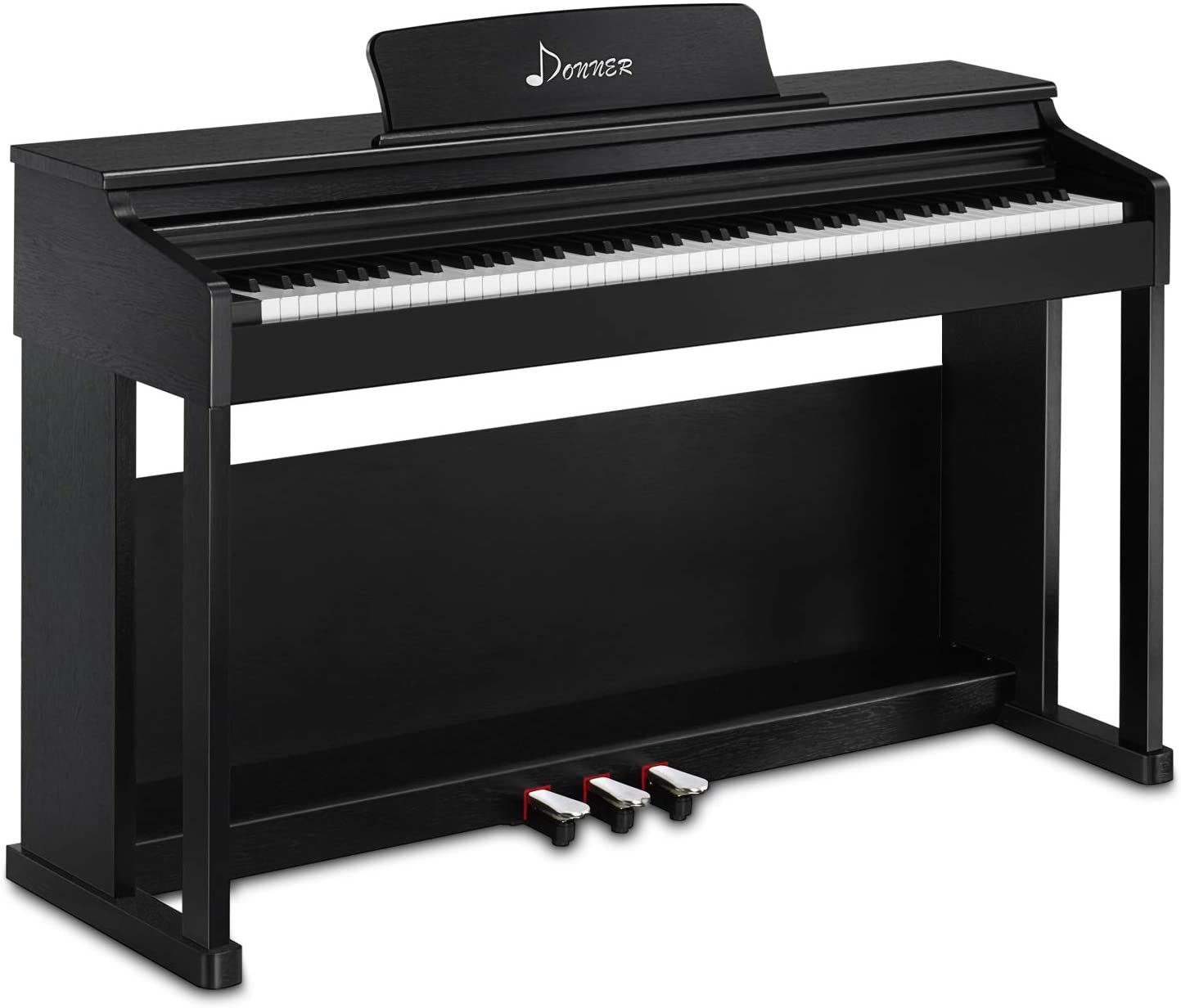
Concluding our review is the Donner DDP-100 digital piano. Like other high-quality pianos, this instrument boasts a fully-weighted action keyboard that produces the feel of an acoustic piano. It also uses Advanced Wave Memory (AWM) sampling to produce rich, deep, and broad sounds. Furthermore, the piano comes with three pedals.
If you want more than a home practice digital piano at a modest price, the Donner DDP-100 is made for you. This piano provides a stage presence that makes it suitable for various kinds of use. Whether you’re training at home or you’re playing to an audience, this instrument impresses.
As we mentioned earlier, there are numerous digital pianos on the market, so many that choosing the right one for your development can be tricky. Keeping to our promise of helping you choose the best digital piano for intermediate pianists, we’ve developed a comprehensive buying guide to help you make a seamless choice.
Our buying guide contains the important information you need to pick the right digital piano for your development. Let’s get right to guiding you!
Many factors define intermediate piano players. Prominent among them is time. Such players must have been playing the piano for 6 – 18 months. Another major factor that defines intermediate piano players is their ability to count rhythms and read bass and treble clef comfortably.
You can practice playing the piano using apps, like in this video about Roland RP102:
At the intermediate level, the next step is becoming an advanced player. Below, we’ll provide you with important tips to become an advanced player and sustain your level:
Intermediate digital pianos don’t cost as much as the advanced-level or premium models. Their prices range between 500-1000 dollars. So, if you’re planning to buy one, your budget should be in that range.
You can’t possibly pick the best digital piano for intermediate pianists without knowing where to look and what to consider. Below, we’ll discuss the factors and features you must consider before making a choice:
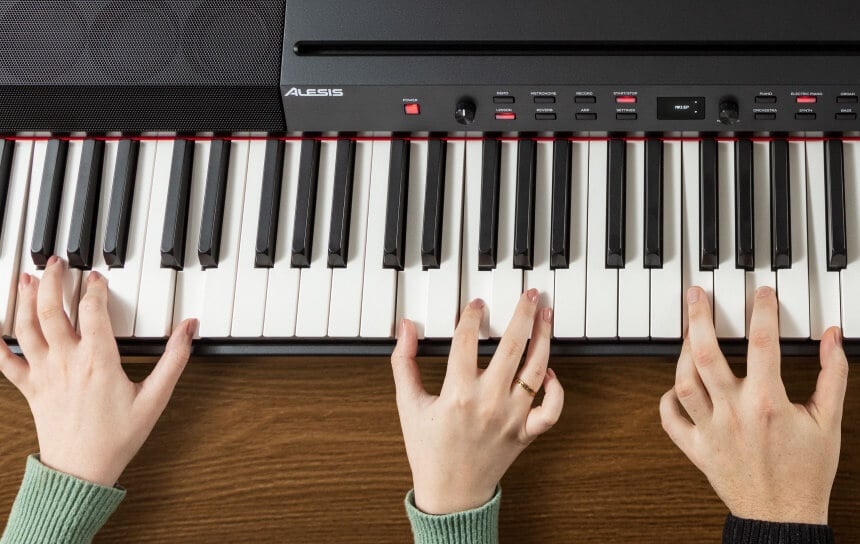
The keyboard of a digital piano makes the difference between it and an electronic keyboard. The difference is usually in the response. You’ve probably noticed that most digital pianos use weighted and semi-weighted keyboards. These keyboards produce a response that mimics an acoustic piano. Hammer action adds mechanical hammers to enhance the response more.
So, it’s not surprising that high-quality options such as Casio PX-770 digital piano, Alesis Prestige Artist digital piano, amongst others, boast “hammer action”. If your main goal is to improve your playing skills or perform classical music, weighted keys are a must. It’s even better if the keys are “fully weighted” like those on the Donner DDP-100 digital piano.
Polyphony is the number of individual tones or notes that a piano can produce at once. As you’ve probably noticed from the reviews, polyphony varies with different brands and models. While one model may feature 128 notes, another may feature 264-note polyphony. The higher the notes, the better the complex sounds you can create.
So, it’s always best to go for the digital pianos with the highest notes if you want to create more adequate complex sounds. With 256-note polyphony, digital pianos like the Yamaha DGX670B and the Alesis Prestige Artist are the standard.
Of course, the main purpose of an intermediate digital piano is practicing but it doesn’t hurt to have one that is fit for the stage. While using such a piano for practice, you can also use it to play at church and concerts. A piano’s fitness for stage usually depends on its construction, build, pedals, and sound quality.
Classic examples of digital pianos that are fit for the stage are the Donner DDP-100 and Roland RP102.
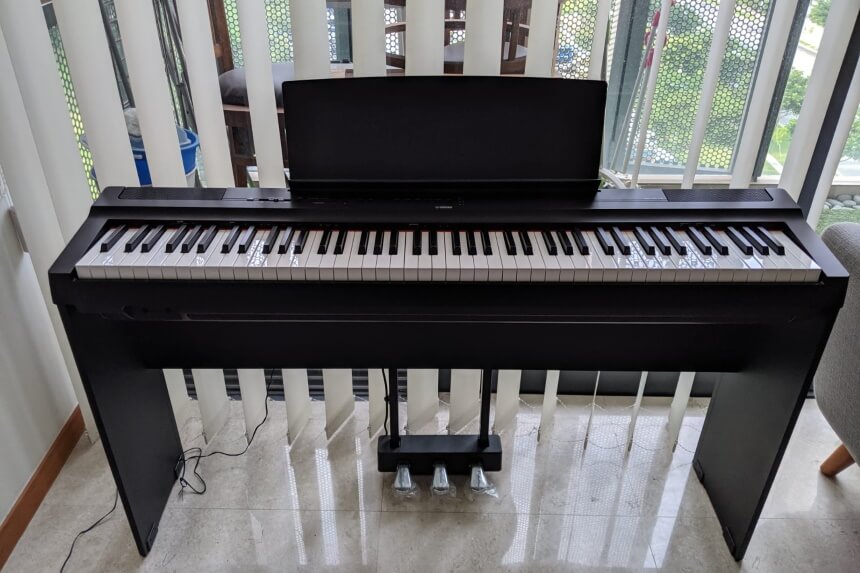
A digital piano’s construction is one of the most important and defining features. And there’s a direct relationship between construction and durability. If the piano’s construction is poor, there’s a good chance the musical instrument won’t last a long time, which is a situation you will want to avoid.
The tricky part is you can’t truly tell the quality of a piano’s construction until you see and feel it. This won’t be possible if you’re buying online but customer reviews can help out. In our testing, we found the Yamaha DGX670B and Yamaha P125—two products from the same manufacturer—to feature high-quality construction.
A digital piano Trusted Source Acoustics, perception, and production of legato articulation on a digital piano This study investigated the perception and production of legato (“connected”) articulation in repeatedly ascending and descending tone sequences on a digital piano (Roland RD-250s). Initial measurements of the synthetic tones revealed substantial decay times following key release. pubmed.ncbi.nlm.nih.gov is basically a musical instrument designed to serve as an alternative to the rich sounds of an acoustic piano through digital sampling technology. The sampling of various digital pianos varies. Accordingly, their sound quality varies too.
In judging sound quality, you must pay attention to the sustain of the notes and the overall realism of the sounds. When you consider these factors, Korg B2 is a good example of a digital piano with great sound quality.
Another important determinant of sound quality is the quality of speakers and amplifiers used in digital pianos. The Kawai ES110 is the perfect example of a piano that doesn’t have low-quality sounds but is let down by its speakers. But it’s hard to determine whether the speakers are at fault, so it’s best to opt for a piano with good sound quality and speakers.
Now, let’s talk about voice presets and software. Today’s digital pianos typically feature tens and hundreds of sound samples from musical instruments such as organs, accordions, flutes, etc., but you’ll likely stick to the basic piano sounds. Having numerous voices to choose from increases your options but it can also give you a selection headache.
Ultimately, you’ll have to decide whether you want the 600+ preset voices of the Yamaha DGX670B or you’re contented with the 4 piano and 11 instrumental presets of the Roland RP102.
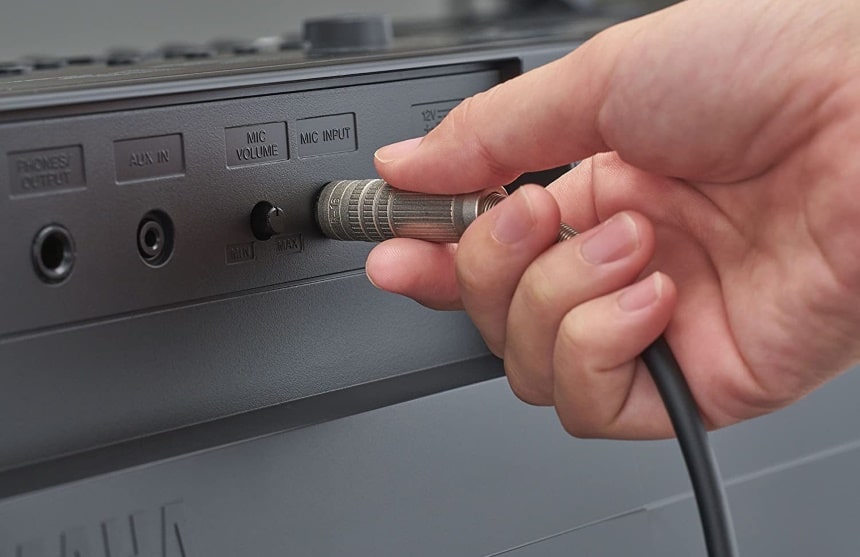
Connectivity is another important factor you can’t ignore when shopping for the best digital piano for intermediate pianists. It determines whether you can enjoy wired or wireless connections to other devices or accessories.
For example, the Roland RP102 features built-in Bluetooth MIDI that allows wireless connection to smartphone apps for advanced piano controls while the Alesis Prestige Artist sports a USB-MIDI output for use with educational software. Other connectivity features include headphone jacks, stereo outputs, and AUX inputs & outputs.
Here, you’ll have to make a choice based on your needs and preferences.
Beyond the main features, some extra features enhance the practicing and playing experience too. For example, the Casio PX-770 features a duet mode that splits the piano into two equal parts, allowing a teacher and student to play with the same instrument at the same time. This feature is very helpful for an intermediate pianist who is still learning.
Other useful features you should consider are the metronome, octave shifting, layer mode, accompaniment function, and sound effects (chorus, reverb, delay, etc.).
Given that you’ll have to part with hundreds of dollars to pick up a digital piano, it’s not out of place to aim for an option that comes with several add-ons. If you don’t want to buy a 3-pedal bar separately, you can opt for a piano like the Donner DDP-100. Other accessories you can look out for include a built-in piano stand, music rest, etc.
Every buyer wants value for their money. The warranty offers a buyer an opportunity to assure them that their investment is safe for a specific number of years. Duration of warranties varies with different digital pianos. We recommend a piano that offers at least 3 years of warranty.
With so many digital pianos on the market, we’ve helped you streamline the pool and review the top options on the market with the Yamaha DGX670B emerging as our editor’s choice. This choice isn’t a strange one considering this piano’s several top features, including a weighted action keyboard, VRM, Stereophonic Optimizer, etc.
Coming a close second is the Roland RP102—our upgrade pick—which boasts SuperNATURAL Piano technology and 200+ onboard songs. Then, there’s our value pick—the Alesis Prestige Artist digital piano—which packs various features such as graded hammer action keyboard, 30 multi-sampled voices, built-in arpeggiator, simultaneous Split & Layer modes, and five adjustable Reverb FX, and more at a great price.
Regardless of your needs or preferences, our list has the right instrument for you. And with our detailed buying guide, you have the right tool to choose the best digital piano for intermediate level.